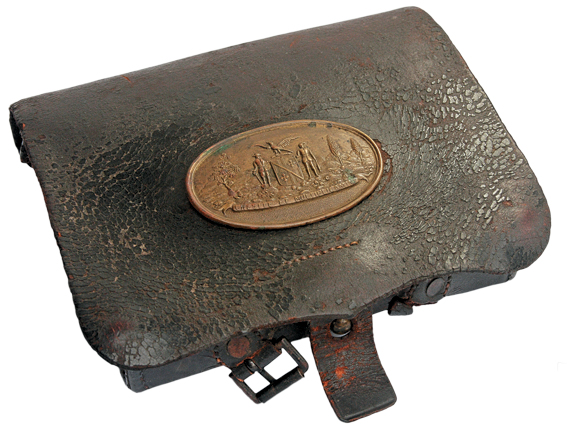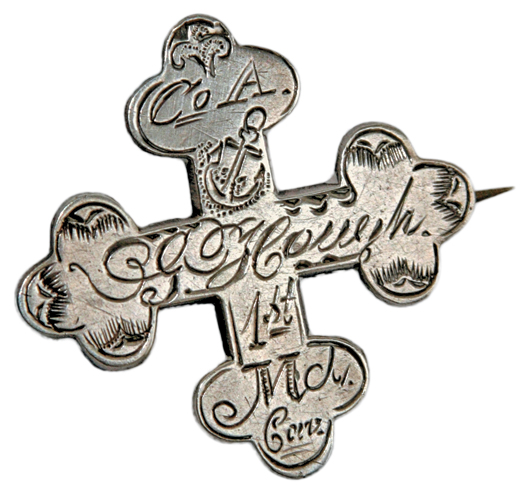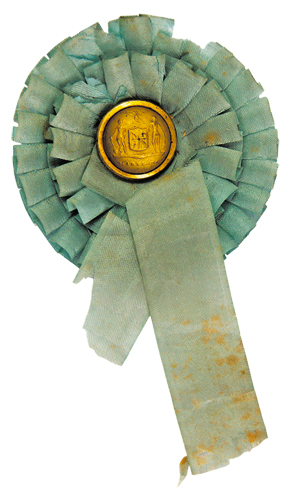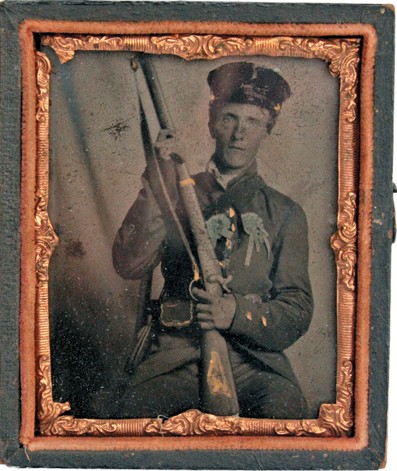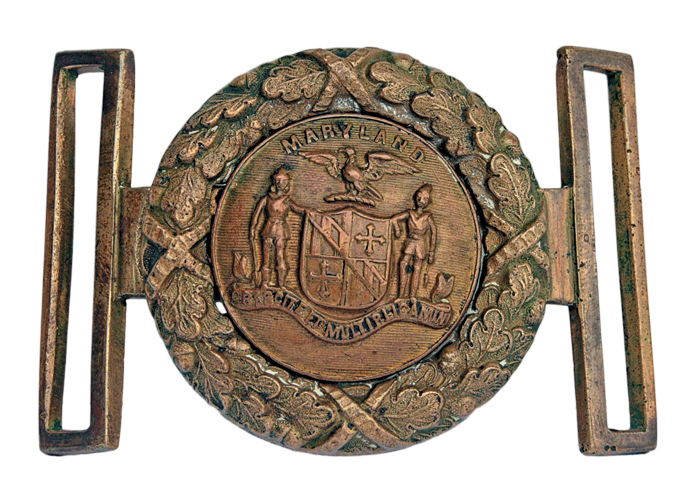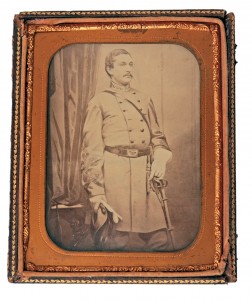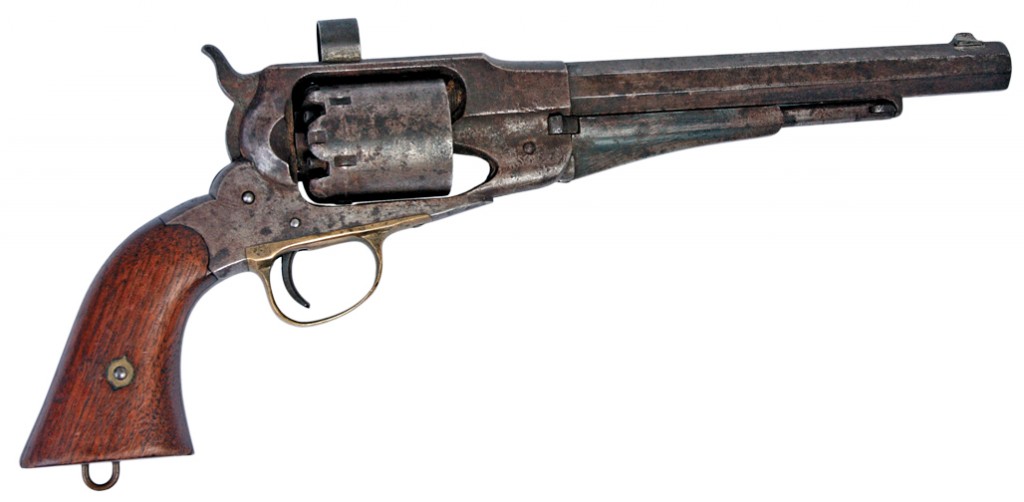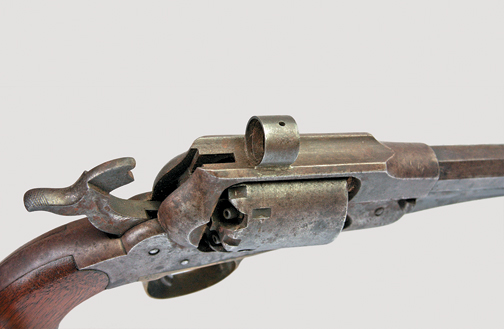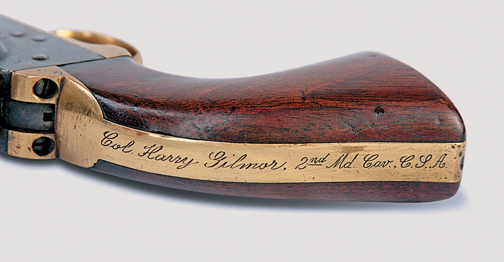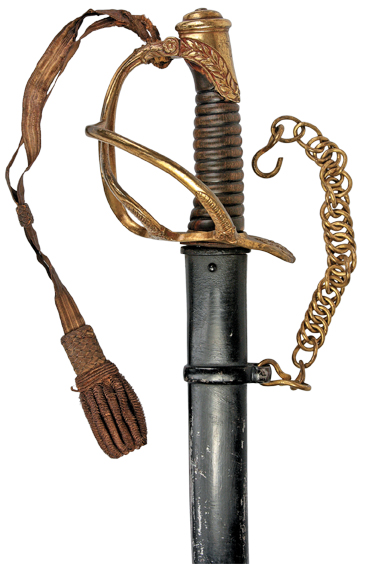Marylanders For Dixie!
THE BORDER STATE of Maryland sent men to both the Union and the Confederate armies. Southern sympathies were strongest in Baltimore and the Eastern Shore regions of the Old Line State, but hundreds of men from the western counties cast their lot with the Confederacy as well. Though incomplete records make it impossible to determine how many Marylanders fought in gray, about 5,000 soldiers made up the two infantry regiments, four artillery batteries and two cavalry troops that were Maryland-designated units, and thousands more joined units from other Confederate states. The rare artifacts pictured here are all from Daniel D. Hartzler’s unique collection of items that belonged to the Maryland “Band of Brothers” who fought for the South. (All photos by Sarah J. Mock)
“Increase and Multiply”
A brass plate with the Maryland state seal adorns a cartridge box made in Massachusetts before the war. The seal features a farmer and a fisherman flanking the state’s crest and the Latin words crescite et multiplicamini, which, translated, is the heading for this caption. Some Confederates from Maryland went to war wearing similar cartridge boxes.
Cross the River
Not every Marylander served in a unit from his home state. The 1st Virginia Cavalry was raised in Winchester, but in 1861 Company K of that regiment was composed primarily of troopers who had crossed the Potomac River to join in the Confederacy’s fight.
War Trophy
The throat of this sword’s scabbard is engraved: “Captured at Battle of Winchester from 1st Lieutenant, 5th Rhode Island Battery by John C. Carroll 1st Maryland Cav. C.S.A.”
Confederate Cross
“Maryland Cross” pins, adapted from the crosses on the state seal, were worn by many Old Line State troops as the unofficial symbol of Confederate Maryland—and more practically as ID tags. Private Gresham Hough of the 1st Maryland Cavalry wore this example.
Whose timepiece?
This engraved watch, with a rosette from a horse’s halter used as a fob, came from the Blackistone family, which lived near St. Mary’s. Six Blackistone men served in the Confederate Army, but it’s not possible to determine if this watch belonged to George, Thomas, Wellington, Samuel, William or Henry.
Bonnie Blue
Some Marylanders wore secession cockades to show their allegiance. This silk cockade is set off with a Maryland state button.
Charm City defender
A Baltimore militiaman wears two secession cockades similar to the one pictured above.
Buckle up
John Eager Howard wore this beautiful Maryland state seal belt buckle. Howard enlisted in the 1st Maryland (CSA) in 1861, and later became a captain and the quartermaster of the 2nd Maryland Infantry.
The Gilmor family of Baltimore County sent eight brothers and cousins into the Confederate Army. Harry, the most famous of the lot, served in several Virginia cavalry units before being given command of a partisan troop, the 1st Maryland Battalion, later known as the 2nd Maryland Cavalry. Gilmor’s men caused a great deal of trouble in the Shenandoah Valley and along the Potomac River, and Union Maj. Gen. Philip Sheridan authorized a mission to capture him in Moorefield, W. Va., after which he was imprisoned in Boston. He chronicled his exploits in Four Years in the Saddle (1866).
Daring Raider
Harry Gilmor made a number of daring raids into his native state. On July 11, 1864, his men wrecked a railroad bridge northeast of the city of Baltimore and captured a train carrying Union Maj. Gen. William Buel Franklin.
Shoot Straight
Graham Gilmor, Harry’s brother, modified his .44-caliber Remington revolver with a loop at the base of the grip for a lanyard, and more uniquely, with a custom rear sight.
The large round sight would make it much easier to focus on a target while riding a horse. The crosshairs appear to be made of a natural fiber—perhaps silk or even horsehair?
A gunsmith had to mill a groove into the flat top of the Remington’s frame to install the sight. The small hole in the top of the sight let in a bit of light.
Colonel Harry Gilmor carried this pistol made by the Southern firm of Leech & Rigdon. The revolver was a copy of the Model 1858 Colt Navy Revolver.
Made in France
This French officer’s cavalry saber belonged to Harry Gilmor. The top suspension ring has been replaced with the brass chin strap from a horse’s halter. The chin strap hooks into a hole in the quillon of the sword hilt.
This portfolio was originally published in the April 2014 issue of Civil War Times.


